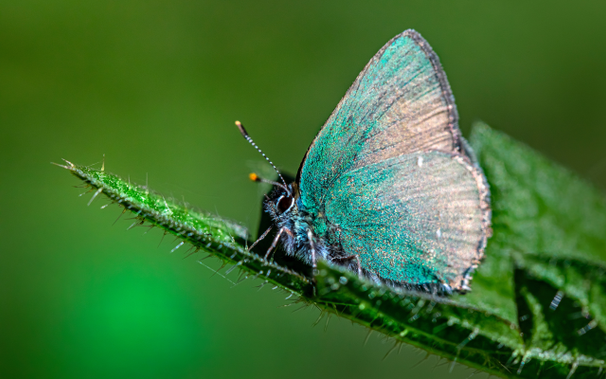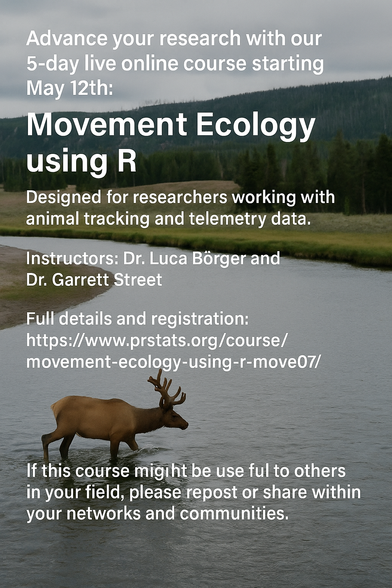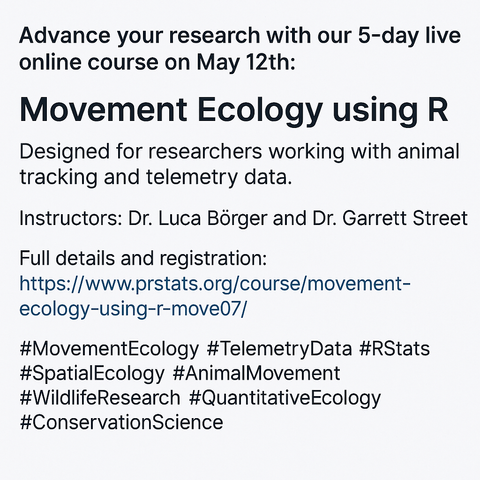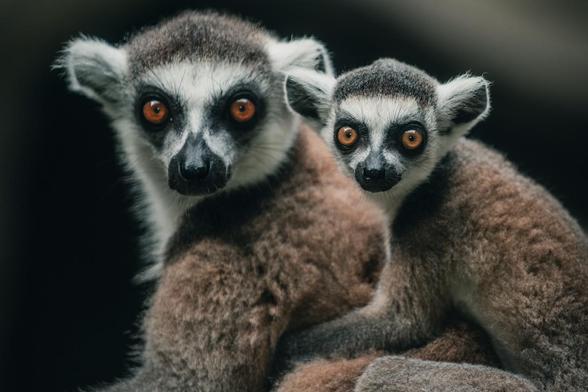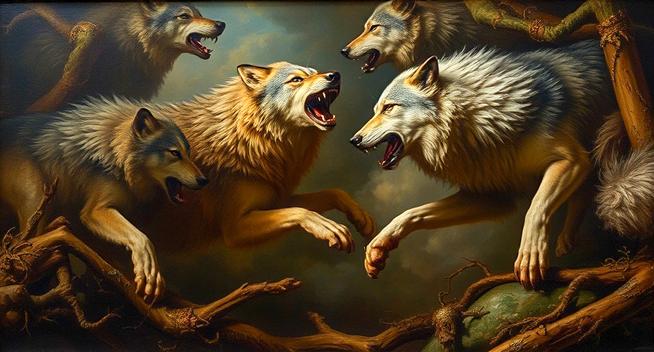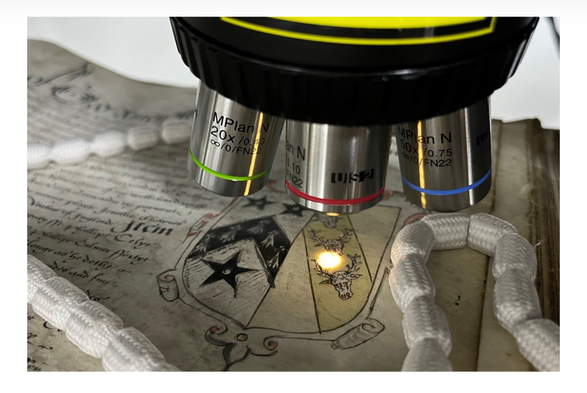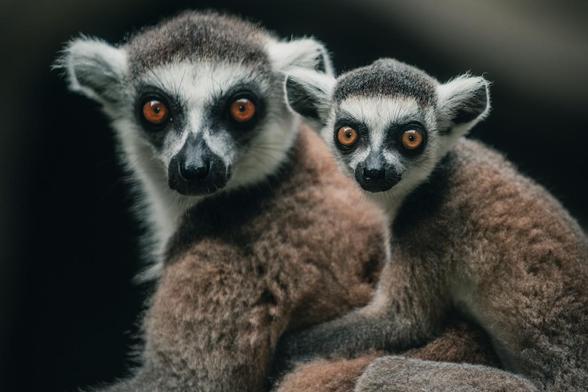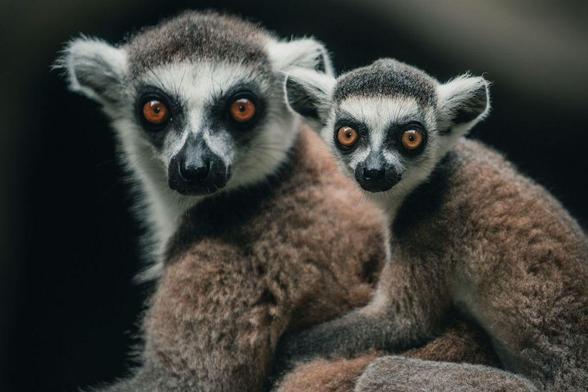"This dyeing tradition came under threat in Oaxaca during the early 1980s when a Japanese company, Imperial Purple Inc., overharvested them. Instead of allowing the mollusks to recover, they collected dye year round. Within four years, the population was severely depleted. Led by anthropologist Marta Turok and the Pinotepa shell dyers, the Mexican authorities were petitioned to protect the purpura habitat. Since 1988, only licensed Mixtec dyers are permitted to harvest dye, taking monthly turns according to the moon cycle, thus creating a healthy environment for the shellfish. The men of Pinotepa de Don Luis continue this practice, trading or selling the dyed cotton to their village women weavers."
https://www.clothroads.com/the-color-purple-purpura-shell-dyeing-in-oaxaca/ #ConservationScience
#conservationscience
🧬 On #WorldBiodiversityDay, discover how we help turn biodiversity data into conservation action through collaborations on Biodiversity Meets Data, @erga_biodiv,
@libroscope and others.
🌍 Learn more: www.sib.swiss/biodiversity
Even remote forests aren’t safe. New research shows human activity reduces biodiversity far beyond city limits. #BiodiversityLoss #DarkDiversity #ConservationScience
https://geekoo.news/invisible-loss-how-cities-empty-forests-afar/
New episode! ♻️
Jenny and Solange are joined by Panos Morfis as we figure out #bioplastics: what they are, how we can look after them, and why #conservators should get onboard with #3Dprinting.
Listen here: https://thecword.show/2025/05/14/s16e05-bioplastics/
#TheCWordPodcast #podcasts #HeritageScience #plastics #ConservationScience #conservation #science
New research reveals biodiversity doesn't scale uniformly—discover the three-phase pattern changing conservation strategies. #Biodiversity #Ecology #ConservationScience
https://geekoo.news/uneven-growth-rethinking-biodiversity-across-scales/
Advance your research with our 5-day live online course starting May 12th:
Movement Ecology using R
Designed for researchers working with animal tracking and telemetry data.
Instructors: Dr. Luca Börger and Dr. Garrett Street.
Full details:
https://www.prstats.org/course/movement-ecology-using-r-move07/
#MovementEcology
#RStats
#SpatialEcology
#AnimalMovement
#WildlifeResearch
#QuantitativeEcology
#ConservationScience
If this course might be useful to others in your field, please repost or share within your networks and communities.
Advance your research with our live online course starting May 12th:
Movement Ecology using R
Designed for researchers working with animal tracking and telemetry data.
Instructors: Dr. Luca Börger and Dr. Garrett Street
Full details and registration:
https://www.prstats.org/course/movement-ecology-using-r-move07/
#python
#TelemetryData
#RStats
#SpatialEcology
#AnimalMovement
#WildlifeResearch
#QuantitativeEcology
#ConservationScience
"Wooly mice" a test run for mammoth gene editing — https://arstechnica.com/science/2025/03/wooly-mice-a-test-run-for-mammoth-gene-editing/
#HackerNews #WoolyMice #MammothGeneEditing #GeneticEngineering #ConservationScience #Biotechnology
🌿✨ Madagascar’s Masoala National Park is a biodiversity hotspot! Discover the fossa, the agile mammalian carnivore, or the traveler’s tree, a vital water source for wildlife. 🦎🌱 Learn about 10 unique species that make this park special: https://frayedpassport.com/10-unique-animals-plants-youll-see-in-masoala-national-park-madagascar/
Let’s Talk About Europe’s Wolf Protection Laws
As you may have heard, the Standing Committee of the Berne Convention (an international legal instrument for nature conservation) decided to lower the protection status of wolves. This opens the way to lower their protection status across the EU through the Habitats Directive.
The move had been on the cards for over a year, and I covered it extensively on my podcast in episode 163 last November. Back then, I spoke to five experts: scientists working in the fields of biology and social sciences, hunters, environmentalists and even a goat breeder, in an attempt to get the full picture of the situation. As it was then, it still is clear to me that a topic so complex and emotional as killing wolves cannot be fully covered with the opinion of only one podcast guest.
However, in light of this recent development and hearing the chorus of voices it provoked, I decided to write this piece to give you my take on this issue. Is it all that terrible for the wolves in Europe? Of course, given how emotive this topic is, I need to be careful with my words here, not to be accused (again) of spreading the ‘strong nothing to worry about’ vibes. Please hear me out.
First and foremost, the potential move of wolves from Annex IV to Annex V of the Habitats Directive would lower their protection status from ‘strictly protected’ to ‘protected’. Let’s be clear: wolves are still protected. It’s not, as some commentators would have us believe, that a wholesale slaughter of wolves in Europe is imminent. The conservation outcome requirements remain unchanged. Member States still need to recover wolf populations and maintain them in a favourable conservation status.
I disagree with the frequently repeated claim that there is no scientific basis for lowering wolf protection status. I take issue with how a complex body of evidence, including data, observations, predictions and modelling, is often presented as a single, easily interpreted result. In most cases, the reality is more nuanced. Everyone acknowledges that wolves have made a remarkable comeback across Europe. It’s a great conservation success story! So you have to ask yourself a question, why do we have this system of annexes in the Habitats Directive? Isn’t it supposed to reflect species’ conservation status? Why does moving a species to another annex to reflect its recovery cause so much fuss? The answer is politics.
While decisions about moving species from one annex to another should be left to scientists, downlisting an animal (as in this case, wolves) involves an unnecessarily bureaucratic process that requires approval from the EU’s heads of state. This not only creates a very static system where species cannot be easily moved up and down, but it also politicises the process, creating fertile ground for politicians to signal to their voters. And I have said it many times before, when conservation gets politicised, nature and wildlife are the losers. The resulting system rigidity is considered a major flaw in the Habitats Directive. It’s in stark contrast with other dynamic processes of conservation status assessment. Take the example of the IUCN Red List system, where conservation status is periodically reviewed based on the best available scientific data on population size and density. Species status changes without political involvement. Similarly, the US Endangered Species Act is more dynamic, with species being uplisted and downlisted as they become threatened or recover.
But is wolf recovery in Europe sufficient to justify downlisting?
You have probably heard one of two main arguments. First, wolves are still missing from the majority of their historic range. I dealt with this argument and the concept of historic range in another article titled ‘The Myth of Historic Range in Wolf Conservation’. So, I’m not going to repeat that here. Second, most populations are still in unfavourable conservation status. This is where things become more interesting.
It is always a question of scale. When you look at the individual populations within countries’ borders they might indeed appear small. However, when we zoom out and look at the population as a whole, then it suddenly becomes quite large. Wolf populations in Europe are mixing in ways that haven’t happened for centuries. For example, wolves from the Baltic states are mixing with wolves heading up from Italy. This constitutes a strong argument that wolf conservation should be considered in the context of a European metapopulation. It shows a more robust picture of wolf conservation status, especially given the much improved connectivity. And as we know in conservation, connectivity is everything.
There is one more scientific argument, this time from the realm of social sciences. As anyone interested in conservation should know, social science is likely the most important part of conservation science. Wolves can be inconvenient neighbours. There is no doubt that the increase in wolf numbers, range and density has resulted in increased human-wildlife conflict. Yes, I am aware of all the arguments about livestock protection measures and the need to learn to coexist with wildlife. They are all valid, though not without its flaws. Yes, killing wolves does not necessarily prevent attacks on livestock, nor is it the most effective way of managing conflict. But it gives people something else, a feeling of agency. I remember a discussion with Helen Arusoo, the leader of Estonia’s National Animal Working Group (the wolf is the national animal of Estonia), who said that when people feel they lack this sense of agency, they will “hate the wolf in their heart”. During that conversation, she made an excellent point that perhaps it would be a good idea for the EU to look, for once, at smaller countries like Estonia, which are running gold-standard wolf conservation programmes, and learn from their experience. I would definitely recommend listening to my conversation with Helen in episode 168.
So is it all good?
Not quite. Even though it is unlikely that downlisting will pose a threat to the wolf population in Europe, many wolves will be killed in the EU as a result. That is, after all, the whole purpose behind the move. I have no doubt that in some regions and cases, the killing will be excessive, resulting in the removal of too many individuals, leading to pack structure disruption and even local extirpation. Furthermore, pack disruption leads to more lone wolves on the landscape through the loss of pack leaders and disruption of social learning. These solitary individuals are more likely to come into conflict with humans, which can create a vicious circle of wolf killing. The wolves will be especially vulnerable in the regions where anti-wolf sentiments have been embraced by politicians who have managed to get into government in recent election cycles.
Controlling wolf numbers based solely on human tolerance rather than their ecological function has serious ecological impacts. Wolves play a key role not only in controlling the numbers and grazing behaviour of ungulates but also in regulating mesopredator populations, such as foxes. It is a well-known fact that current mainstream farming practices are a cause of the overabundance of generalist mesopredators, which leads to various ecosystem imbalances. The precarious state of ground-nesting birds is a good example. To reinforce this point, ground-nesting bird populations are in a much better shape (with less severe decline) in Eastern Europe, where wolves are present in greater numbers and, in some regions, were never extirpated, unlike in Western Europe.
The downlisting of wolves in the EU may also have broader geopolitical implications. It could pave the way for further politically motivated modifications of the Habitats Directive or changes to the protection of other species that are, in one way or another, incompatible with immediate human interests. The downlisting could also send a problematic message to the world. If a rich European society cannot coexist with relatively harmless predators like wolves, how can it expect other, poorer nations to coexist with much more dangerous and problematic animals like lions or elephants (see ‘trophy import ban’)? That is a blatant display of double standards by European politicians.
Finally, and this argument might seem out of place to some, there is the potential negative impact on hunting and hunters. I can already see the public outcry over wolf hunts organised by the ossified, old-school hunting organisations in Europe. Along with thoughtless hunters posting photos of the wolves they killed. This would only further undermine the social acceptance of hunting, giving anti-hunting organisations ammunition to advance their objectives. Hunters and hunting organisations need to be careful not to let their reputation be further tarnished.
Despite the potential for negative outcomes, the optimist in me wants to see the positives that could follow this decision. Primarily, there is potential to depoliticise the Habitats Directive by implementing Article 19, making it a scientific and flexible tool for classifying species conservation status. I also hope that overall, this move will improve the coexistence and acceptance of wolves on Europe’s landscape. The symbolism of wolves’ strictly protected status, especially in the current political climate, has caused wildlife conservation matters to become entangled in both populist right-wing and hard-left politics. And this is more damaging than shooting a few wolves as the price for coexistence.
If you enjoyed this article, please sign up for my newsletter for more: newsletter.tommysoutdoors.com. To listen to exclusive interviews about the proposal to reduce the protection of wolves in the EU, click here.
#bernConvention #conservationPolitics #conservationScience #ecologicalImpact #environmentalPolicy #environmentalProtection #europeanUnion #HabitatsDirective #humanWildlifeConflict #Hunting #predatorConservation #wildlifeConservation #wildlifeManagement #Wolves
Arts and Humanities Research Council (AHRC) unveils 31 projects to grow the UK heritage economy and protect cultural heritage for future generations including:
- preserving Andy Warhol’s Marilyn Diptych at the Tate
- University of Southampton will establish a facility to investigate vulnerable traces of our shared past found in rivers, lakes, coastlines and seas such as shipwrecks and submerged prehistoric sites
https://www.ukri.org/news/projects-to-boost-uk-heritage-science-and-conservation-capability/
🌿✨ Madagascar’s Masoala National Park is a biodiversity hotspot! Discover the fossa, the agile mammalian carnivore, or the traveler’s tree, a vital water source for wildlife. 🦎🌱 Learn about 10 unique species that make this park special: https://frayedpassport.com/10-unique-animals-plants-youll-see-in-masoala-national-park-madagascar/
🌿✨ Madagascar’s Masoala National Park is a biodiversity hotspot! Discover the fossa, the agile mammalian carnivore, or the traveler’s tree, a vital water source for wildlife. 🦎🌱 Learn about 10 unique species that make this park special: https://frayedpassport.com/10-unique-animals-plants-youll-see-in-masoala-national-park-madagascar/
👇👇 crazy...
How scientists debunked one of conservation’s most influential statistics | Indigenous peoples | The Guardian
https://www.theguardian.com/environment/2024/sep/13/indigenous-factoid-nature-80-percent-false-biodiversity-aoe
#weboflife #biodiversity #ConservationScience #ScientificData
International Biodiversity Consultants Ltd (IBC) is actively seeking dedicated #professionals in the field of #mammalogy to collaborate on potential projects spanning diverse #ecosystems.
Please fill out this form to register your interest and submit your CV *share it within your networks*: https://bit.ly/3TnCHC9
#MammalogyExperts #BiodiversityConsultants #ExpertNetwork #JoinOurTeam #ContractWork #MammalConservation #FieldBiologists #MammalExperts #Mammals #ConservationScience
*Research*
Study questions #sustainability from evolutionary perspective, arguing true #conservation requires less human-centric view and transition from growth-driven systems. #NatureProtection #ConservationScience #ClimateAction
https://thetrasheconomy.com/2024/01/15/research-an-evolutionary-critique-of-sustainability/
@𝗧𝗵𝗲𝗧𝗼𝗿𝗼𝗻𝘁𝗼𝗭𝗼𝗼
It's #ScienceLiteracyWeek and we're celebrating Energy 🔬🌱
At your Toronto Zoo, energy means different things to the different people that work here, as well as the animals under our care.
Hear from the many people who are making a difference 🎤 #SciLit #conservationscience https://t.co/v0to5f5ouc
∙ 𝚂𝚎𝚙 𝟷𝟾, 𝟸𝟶𝟸𝟹 𝟷𝟷:𝟹𝟷𝙰𝙼 ∙
Excited to be heading to #ICCB2023 today with some of my RMIT ICON Science colleagues
It's my first #conservationScience conference, and I'm really looking forward to meeting people!
Any folks here going? I'd love to meet up! *Waves & grins*
